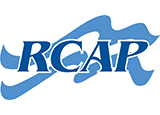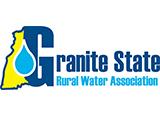Small PWS Help Center
Tools, information, training and assistance to help systems serving less than 1,000 people sustainably provide safe drinking water.
This Small Systems Help Center is designed to assist New Hampshire public water systems serving up to 1,000 persons to sustainably provide safe drinking water by improving capabilities and capacities in three areas: technical (source water, infrastructure and operations); managerial (staffing, task planning and communications); and financial (billing and fiscal planning). With up to 58% of New Hampshire’s public small community water systems aged 40 years or older, the need to address the aging infrastructure is high and, if your public water system is experiencing challenges, it is not alone. This Small Systems Help Center is designed to help you address small and large challenges in sustainably providing safe and reliable drinking water. You can search your areas of interest by clicking on the applicable tabs below.
Technical Capacity
 From collecting bacteria samples to communicating the need to water system commissioners for a new distribution system, technical capability depends on operator knowledge of the water system and regular monitoring, maintenance, recordkeeping, planning and communications. Water system operators and managers are critical technical partners in the health of the water system, because they have the most comprehensive and detailed knowledge about its condition. For community water systems, filling out the Asset Inventory of the Small Systems Asset Management/Business Plan template is a very effective way to communicate a schedule of prioritized water system needs to decision makers. When bacteria are detected in routine samples, water systems must fill out a Level 1 Assessment Form and for repeated bacteria detections, have a certified operator fill out a Level 2 Assessment Form. Technical Help Resources
From collecting bacteria samples to communicating the need to water system commissioners for a new distribution system, technical capability depends on operator knowledge of the water system and regular monitoring, maintenance, recordkeeping, planning and communications. Water system operators and managers are critical technical partners in the health of the water system, because they have the most comprehensive and detailed knowledge about its condition. For community water systems, filling out the Asset Inventory of the Small Systems Asset Management/Business Plan template is a very effective way to communicate a schedule of prioritized water system needs to decision makers. When bacteria are detected in routine samples, water systems must fill out a Level 1 Assessment Form and for repeated bacteria detections, have a certified operator fill out a Level 2 Assessment Form. Technical Help Resources
Managerial Capacity
 Managing a water utility requires constant planning for short-term and long-term needs -- from technical staff to infrastructure needs such as a new water main or flood- and drought-proofing the water system. Therefore, managers stay informed by requesting regular operator status reports about the condition of the entire water system, from water sources through distribution; tracking water quality; managing risks to the system; tracking leakage and customer complaints and ensuring good recordkeeping. Communications with water customers is also a crucial aspect of good management, and the foundation of these communications for community systems is threefold: continuously updating contact information for each consumer having effective means to reach them and proactively reaching out to keep them informed. New to water systems? Try free Online Water Commissioner/Director Training. Managerial Help Resources
Managing a water utility requires constant planning for short-term and long-term needs -- from technical staff to infrastructure needs such as a new water main or flood- and drought-proofing the water system. Therefore, managers stay informed by requesting regular operator status reports about the condition of the entire water system, from water sources through distribution; tracking water quality; managing risks to the system; tracking leakage and customer complaints and ensuring good recordkeeping. Communications with water customers is also a crucial aspect of good management, and the foundation of these communications for community systems is threefold: continuously updating contact information for each consumer having effective means to reach them and proactively reaching out to keep them informed. New to water systems? Try free Online Water Commissioner/Director Training. Managerial Help Resources
Financial Capacity
 Good management of the water system must be linked with budgeting and fiscal planning to continue to provide enough safe drinking water over the long term for the needs of the customers. Although there is no way to achieve everything a water system wants with a limited budget, there is a way to properly budget in order to leverage maximum benefit to the water system within available funding. This process is called asset management, and it helps the board and utility make better-informed decisions about where, how, when and on what projects to spend money. Most small systems make use of loans and grants. Use the Small Systems Asset Management/Business Plan to plan not only for future loans, but to assess whether your current water rate (which can be calculated even if your system doesn’t have service meters) and capital reserve account will cover the expected life of your most important assets.
Good management of the water system must be linked with budgeting and fiscal planning to continue to provide enough safe drinking water over the long term for the needs of the customers. Although there is no way to achieve everything a water system wants with a limited budget, there is a way to properly budget in order to leverage maximum benefit to the water system within available funding. This process is called asset management, and it helps the board and utility make better-informed decisions about where, how, when and on what projects to spend money. Most small systems make use of loans and grants. Use the Small Systems Asset Management/Business Plan to plan not only for future loans, but to assess whether your current water rate (which can be calculated even if your system doesn’t have service meters) and capital reserve account will cover the expected life of your most important assets.
Tools and Resources
Related Content
Did You Know?
Did You Know?
Every year, the DWGB compiles a report for EPA, describing all facets of its technical and financial assistance to public water systems in New Hampshire. View the Annual Capacity Development Report.
Treatment of Public Water
 Treatment of public water is sometimes required to meet state drinking water standards and federal Safe Drinking Water Act Maximum Contaminant Levels (MCLs). For information about how to interpret water quality data, see the NHDES Be Well Informed Treatment App. For post-treatment water quality, find the data by typing the water system’s 7-digit EPA identification number in the Master ID field in NHDES Onestop, and selecting the Public Water System option. Did you know that the most widespread contaminants (aside from bacteria) in drinking water in New Hampshire are naturally-occurring?
Treatment of public water is sometimes required to meet state drinking water standards and federal Safe Drinking Water Act Maximum Contaminant Levels (MCLs). For information about how to interpret water quality data, see the NHDES Be Well Informed Treatment App. For post-treatment water quality, find the data by typing the water system’s 7-digit EPA identification number in the Master ID field in NHDES Onestop, and selecting the Public Water System option. Did you know that the most widespread contaminants (aside from bacteria) in drinking water in New Hampshire are naturally-occurring?
Read about treating natural contaminants
Designs and Modifications
 Designs for new public water systems and modifications to large (>1,000 population) and small (<1,000 population) existing public water systems must be reviewed and approved by state engineers before construction may begin. State review and approval for the proposed location(s) of new wells (and for well modifications, such as deepening and hydrofracturing, due to water quality testing requirements) is also mandated. Applications for drilling of or modifications to community wells and new wells for major groundwater withdrawals are reviewed through the Community Well Siting program and the Large Groundwater Withdrawal Permitting Program, respectively. See the applicable design regulations in our administrative rules library: Env-Dw 404 for large systems, Env-Dw 405 for small community systems, and Env-Dw 406 for non-community systems.
Designs for new public water systems and modifications to large (>1,000 population) and small (<1,000 population) existing public water systems must be reviewed and approved by state engineers before construction may begin. State review and approval for the proposed location(s) of new wells (and for well modifications, such as deepening and hydrofracturing, due to water quality testing requirements) is also mandated. Applications for drilling of or modifications to community wells and new wells for major groundwater withdrawals are reviewed through the Community Well Siting program and the Large Groundwater Withdrawal Permitting Program, respectively. See the applicable design regulations in our administrative rules library: Env-Dw 404 for large systems, Env-Dw 405 for small community systems, and Env-Dw 406 for non-community systems.
See our Water System Design and Non-Community Well Approval Forms.
Did You Know?
Did You Know?
The two least desirable regulatory outcomes of water system managerial and operational errors are violations and significant deficiencies. Both carry deadlines that, if not honored, increase the severity of enforcement. The most frequent of these are easily avoidable. Learn more about how to avoid violations.








